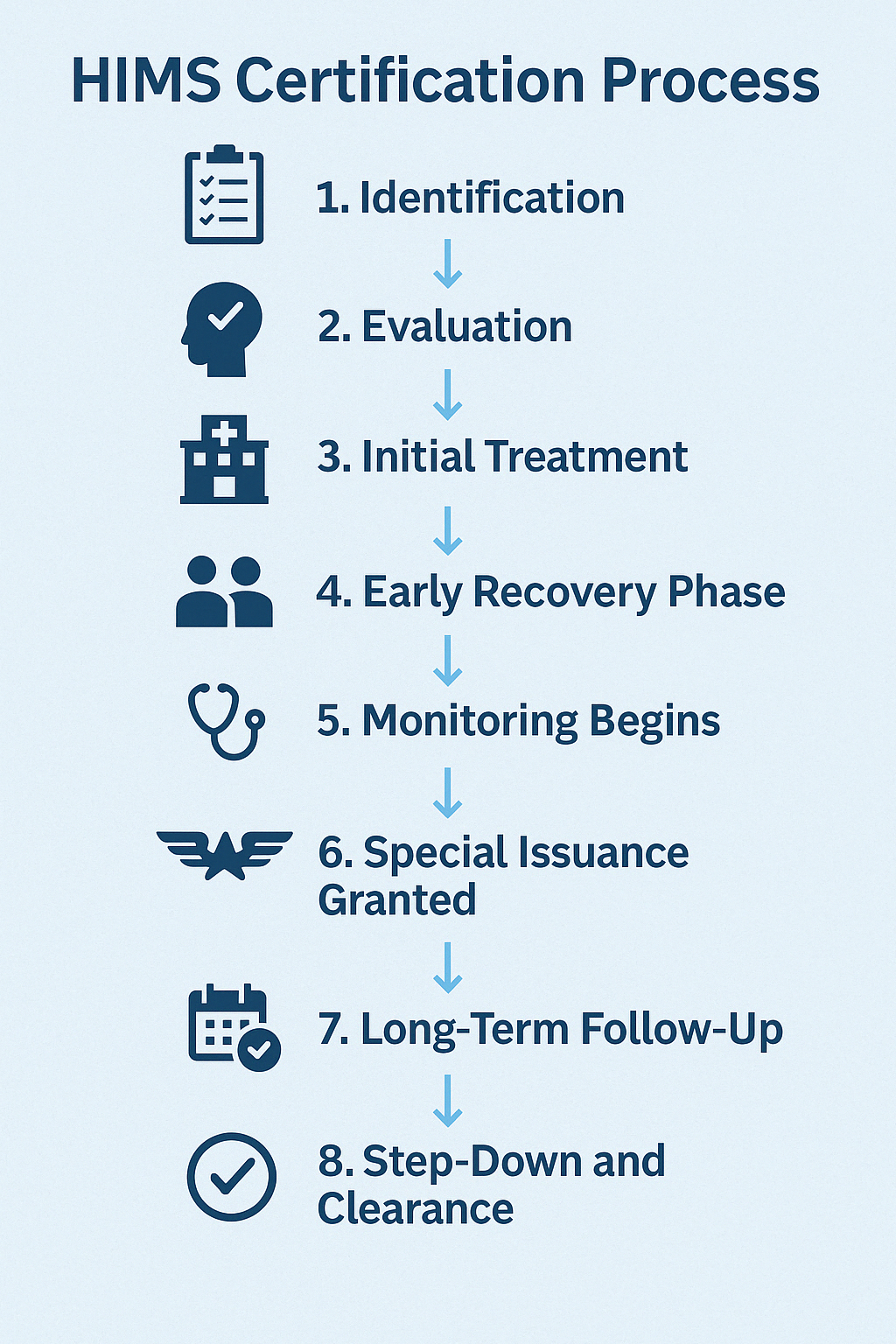The HIMS Certification Process
The FAA’s HIMS program is a structured, multi-step process that provides pilots a pathway back to medical certification following a diagnosis of substance dependence or abuse. Below is a high-level overview of the core phases:
- 1. Identification: A pilot is referred into HIMS via employer, self-disclosure, or FAA red flag (e.g., DUI, failed test, etc.).
- 2. Evaluation: The pilot undergoes a comprehensive substance abuse and psychiatric evaluation by FAA-approved HIMS professionals.
- 3. Initial Treatment: Typically a 28-day inpatient program or comparable outpatient treatment, depending on severity and recommendation.
- 4. Early Recovery Phase: Pilot begins documented abstinence, regular AA/NA meetings, peer sponsorship, and intensive drug/alcohol testing.
- 5. Monitoring Begins: The pilot’s HIMS AME compiles reports and works with FAA medical certification office to initiate a Special Issuance application.
- 6. Special Issuance Granted: If the pilot demonstrates sufficient progress and safety, a time-limited medical certificate is issued with strict conditions.
- 7. Long-Term Follow-Up: Over the next 2–5+ years, the pilot undergoes scheduled psychiatric re-evaluations, reduced drug testing, and submits ongoing documentation from AME and sponsors.
- 8. Step-Down and Clearance: After consistent compliance and long-term abstinence (often 5–8 years), the FAA may transition the pilot to unrestricted medical certification.
FAA Step-Down Plan
The FAA has published a detailed step-down protocol for pilots progressing through the HIMS program. This protocol outlines the recommended reduction of monitoring requirements as pilots demonstrate sustained recovery and compliance over time.
You can view the official FAA Step-Down Plan document here: FAA HIMS AME Step-Down Plan (PDF).

The timeline and details of each phase may vary based on the pilot's background, diagnosis, and response to treatment. The process is rigorous but has helped thousands of pilots return to the skies safely.
Note on Career-Long Monitoring
While HIMS was originally designed to provide a structured path back to unrestricted medical certification, the FAA has shifted its application in practice. Today, it is an established reality that many pilots in the HIMS program are placed under permanent Special Issuance status — with no guaranteed exit point.
Even after a decade or more of sustained sobriety, full compliance, and professional success, pilots are often told that lifetime monitoring is necessary to "maintain public confidence." This policy results in open-ended testing, psychiatric evaluations, and renewals — with no objective metric for release.
Critics argue that this indefinite oversight lacks scientific justification, undermines pilot dignity, and contradicts the program’s original rehabilitative purpose.
For pilots seeking additional information, advocacy resources, and efforts aimed at reforming indefinite Special Issuance practices, an independent site is available here: Pilot Medical Reform Resource.
